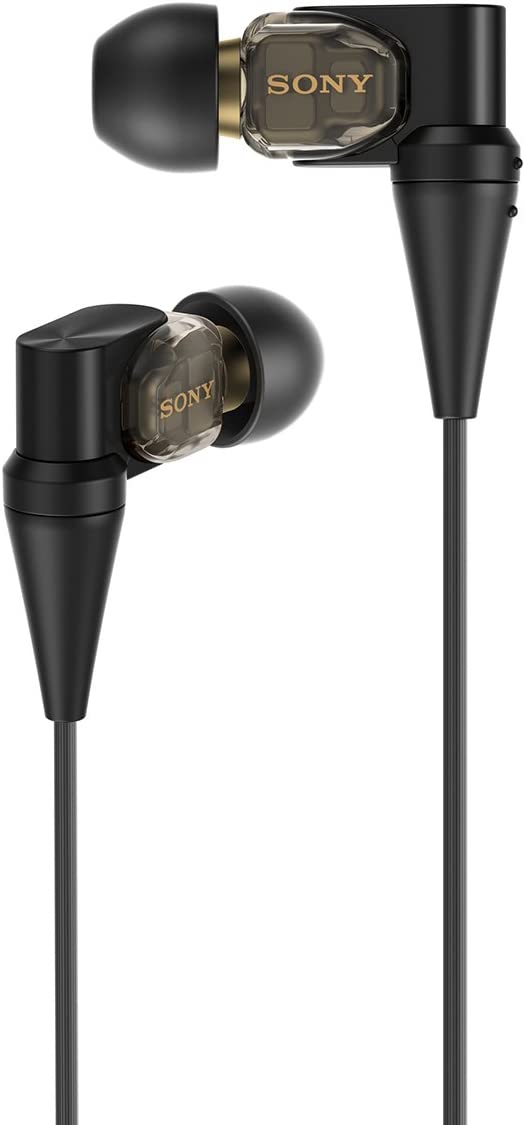The Sound Bubble: How Dolby Atmos, Virtualization, and eARC Build a Cinema at Home
Update on Nov. 14, 2025, 5:36 p.m.
For decades, the promise of “cinema sound at home” has been a central goal of the audio industry. We’ve progressed from simple stereo to complex multi-speaker surround sound systems. Yet, the leap to a truly three-dimensional, immersive “sound bubble”—where sound moves not just around you, but also above you—has only recently become an accessible reality. This revolution is not the result of a single invention, but a convergence of four distinct technologies working in concert.
Understanding these pillars is the key to decoding any modern high-end soundbar and making an informed decision. Instead of a simple review, we will deconstruct the architecture of this new audio reality, using a feature-rich device like the Sony HT-A5000 5.1.2ch Dolby Atmos Sound Bar as our technical blueprint.

Pillar 1: The Blueprint – Object-Based Audio (Dolby Atmos & DTS:X)
The most fundamental shift in immersive audio is the move from channel-based to object-based sound.
- Channel-Based Audio (Traditional 5.1/7.1): Sound mixers assigned specific sounds to specific speakers. A gunshot might be sent to the front-left speaker, dialogue to the center. It creates a horizontal plane of sound, but it’s a fixed-point system.
- Object-Based Audio (Dolby Atmos/DTS:X): Sound mixers now treat sounds as individual “objects” in a 3D virtual space. A helicopter is not assigned to a speaker; it’s an object with coordinates and a flight path. The audio system’s job is to “render” that object’s movement in your specific room in real-time. This allows for a seamless, fluid soundscape where audio can be placed and moved with pinpoint precision anywhere in the room, including overhead.
When a soundbar is advertised as Dolby Atmos compatible, it means it has the processing power to read this 3D audio map and render the sound objects accurately. This is the “brain” of the immersive experience.
Pillar 2: The Physical Foundation – Multi-Channel Speaker Arrays (The Meaning of 5.1.2)
To render an audio object, you need speakers pointing in different directions. The numbering system, like the HT-A5000’s 5.1.2ch configuration, is a map of these physical drivers.
- 5 (The Horizontal Plane): This refers to the five traditional surround channels: front-left, front-center, front-right, and two side-firing or surround channels. These create the enveloping sound at ear level.
- .1 (The Low Frequencies): This is the dedicated channel for the subwoofer, handling the low-frequency effects (LFE) that create visceral impact and rumble. In an all-in-one soundbar like this, it refers to built-in subwoofers.
- .2 (The Vertical Dimension): This is the game-changer for Atmos. It represents two dedicated up-firing speakers. These drivers are physically angled to bounce sound off your ceiling and back down to the listening position, creating the perception of height and overhead sound.
A physical 5.1.2 setup provides the hardware necessary to reproduce the horizontal and vertical information encoded in an object-based soundtrack.

Pillar 3: The Digital Illusion – Virtualization & Sound Mapping
What if you don’t have the ideal room or a full set of rear speakers? This is where Digital Signal Processing (DSP) creates its magic through virtualization.
Advanced soundbars use incredibly complex algorithms to create “phantom speakers.” By precisely manipulating the timing, phase, and frequency of sound waves from the physical drivers, they can trick your brain into perceiving sound coming from where no speaker exists.
Sony’s 360 Spatial Sound Mapping is a prime example. When optional rear speakers are added, the system uses microphones to calibrate itself to your room’s unique dimensions. It then creates up to twelve phantom speakers, filling in the gaps between the physical units to generate a seamless, uniform 360-degree sound bubble.
Even without rear speakers, technologies like Vertical Surround Engine and S-Force Pro Front Surround work to expand the soundscape. They use psychoacoustic principles, like Head-Related Transfer Functions (HRTFs), to simulate height and width, creating a virtualized surround experience from a single bar. This digital wizardry is what allows a compact device to produce a room-filling sound that seems to defy its physical size.

Pillar 4: The Superhighway – High-Bandwidth Connectivity (eARC)
All this complex audio data needs a pipeline big enough to carry it from your TV or streaming device to the soundbar without compromise. This is the critical, often-overlooked role of eARC (Enhanced Audio Return Channel).
- ARC (Audio Return Channel): The older standard, found on many TVs, has limited bandwidth. It can carry compressed 5.1 surround sound but lacks the capacity for the uncompressed, high-resolution audio and metadata required for full-quality Dolby Atmos.
- eARC: This is the modern standard. It offers vastly more bandwidth, allowing it to transmit uncompressed object-based audio formats like Dolby Atmos and DTS:X flawlessly.
Furthermore, a feature like 4K/120 and 8K passthrough ensures the soundbar doesn’t become a bottleneck for your visual experience. It means you can connect a high-end gaming console or Blu-ray player directly to the soundbar, and it will “pass through” the pristine video signal to your TV while decoding the audio itself. For a modern home theater, an eARC connection is not a luxury; it is essential.

Conclusion: From Components to Cohesion
The magic of a modern immersive soundbar isn’t found in a single feature, but in the seamless integration of these four technological pillars. Object-based audio provides the 3D blueprint. A multi-channel speaker array provides the physical tools. Advanced DSP and virtualization fill in the gaps and sculpt the sound to your room. And eARC provides the uncompromised data highway that ties it all together.
When you see a spec sheet for a device like the Sony HT-A5000, you are no longer just looking at a list of features. You are looking at the components of a sophisticated system designed to construct an entire acoustic environment. Understanding how they work in concert empowers you to move beyond marketing and truly appreciate the engineering that brings the cinema home.



























































